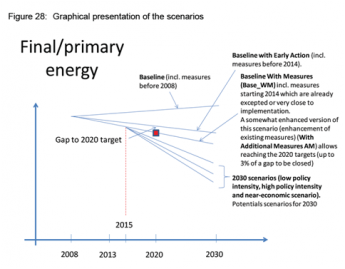FORECAST/eLOAD
-
07.08.2020 Industrial excess heat for district heating: Database shows great potential for supplying households
Excess heat from energy-intensive industries is often suitable for use in district heating systems but is usually unutilized. A detailed overview of the potentials available in the EU is now provided by a database of the sEEnergies project. In Germany, 29 petajoules of excess heat from industrial sites could be used, which corresponds to the demand of more than half a million households. The information is available as maps and downloadable datasets.
FORECAST model used to assess energy-efficiency potentials in the EU on behalf of the European Commission DG ENER
24.03.2015
In a recently published study the FORECAST model was used to assess energy-efficiency potentials in the industrial, tertiary and residential sectors until 2020 and 2030.

In a recently published study conducted by Fraunhofer ISI, TU Vienna and PWC on behalf of the European Commission, the FORECAST model was used to assess energy-efficiency potentials in the industrial, tertiary and residential sectors until 2020 and 2030. The analysis was based on six alternative policy scenarios ranging from a baseline without early action to comprehensive implementation of technical potentials with an increasing level of ambition. Modeling was conducted for all EU28 member states on the level of individual countries and considered individual policies. These policies included the EU Ecodesign Directive, the Labelling Directive, The EU Emissions Trading Scheme (ETS), the Energy Performance of Buildings Directive, the Energy Efficiency Directive, energy taxes and selected national policies.
The EU energy-efficiency target is to reduce final energy demand by 20% compared to a 2007 baseline scenario. The results show that current measures fall short of this target by 2-3% under the assumed economic development. However, if additional measures that have already been decided are implemented in the near future, this will close the gap and it is possible to meet the target.
© 2024 Fraunhofer ISI | Publishing Notes | Data Protection


